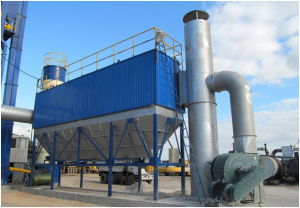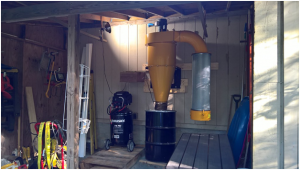Industrial dust must be managed for regulatory compliance and a safe working environment. Cleaning and protecting your dust collector system extends its effective lifespan. Here are five ways to manage dust collection that optimize efficiency and safety for your premises.

1. Get Deflagration Protection
If your dust collection processes deal with flammable dust, you’ll need deflagration protection. The most common method is venting, which allows excess flame and pressure to exit via a pressure-activated explosion vent.
A flameless vent consisting of the high-temperature mesh may also be installed to absorb flame and heat and allow a part of the pressure wave to be safely reabsorbed in the working environment, allowing venting to occur indoors.
2. Understand Pressure
Understanding pressure is essential to determine vent sizing and strength for effective deflagration protection. To mitigate the danger of combustible dust explosions, it’s critical to understand why they occur and work with your dust collector expert to minimize the risks.

3. Protect Your Duct Work
Every part of essential ductwork, including spiral duct components, should be protected using a flow-activated isolation valve. The introduction of such a protective valve will prevent smoke and flame from passing through the upstream areas by forcing the valve closed. After any event, a thorough inspection of the valve and the ductwork must be carried out.
4. Don’t Store Dust
Keeping dust in the hoppers can create a deflagration risk. Hoppers should only ever be used to funnel dust to a storage bin to prevent any unnecessary clogging. Galvanized steel ductwork from https://www.dustspares.co.uk/ductwork-parts/galvanised-ducting/galvanised-steel-spiral-duct.html has the advantage of minimizing clogging and is conductive and easily grounded – unlike plastic pipework that can hold a static charge with potentially explosive results.
Using self-dumping hoppers prevents dust leakage and conflagration risks while making dust disposal straightforward.
5. Use Pulse Cleaning Controls
Pulse cleaning is the maintenance-friendly way to keep filters unclogged and clean, so choosing the right control is critical. Continuous cleaning is necessary for porous dust like silica, but most other dust only requires on-demand cleaning. This setting ensures optimal filter life and cleaning efficiency throughout the dust collector system.
Downtime cleaning is also an important feature that minimizes emissions and energy use. Always runtime-based pulse cleaning at the end of a processing shift to optimize the cartridge life span.

